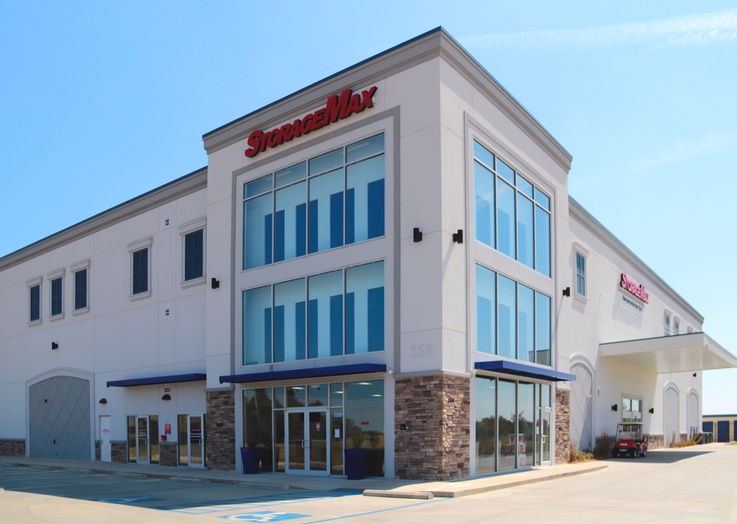The Americans With Disabilities Act
What It Is And Why It’s Important For Self-Storage Operators
Most everyone in the United States knows a little about the Americans with Disabilities Act or, as its commonly referred, the ADA. Enacted by Congress in 1990, the ADA was the first major civil rights act meant to address the needs of people with limited mobility issues, giving them access to all of the facilities that able bodied people can access. Many recognize the changes made to parking lots, which have to maintain a certain number of wheelchair accessible spaces, public restrooms with larger stalls and handrails, and newer buildings with ramp and elevator requirements.
Complying with the ADA is, of course, the right thing to do to ensure everyone can have access. It is also the law, and non-compliance can set your facility up for a lawsuit.
Title III of the law required all new public facilities and those undertaking major renovations to be in compliance. When it comes to self-storage, many owners and operators, especially those with facilities built prior to 1991 that haven’t had any major renovations as well as others who have built since, don’t know there have been changes regarding self-storage facilities since the law was enacted.
Jeffrey Greenberger, partner with Katz Greenberger & Norton, LLC in Cincinnati, Ohio, says things changed in the late 2000s when the justice department put out a public comment for a new interpretation for the ADA. “It turns out we have a little more obligation for compliance than we thought,” says Greenberger about the self-storage industry. “It expands public accommodation from the office to the entire facility.”
Greenberger says that the new regulations, which were put into place in 2010 and took effect in March 2012, were a shock to many in the industry. “We really felt that self-storage facilities were like an apartment complex,” he states. “The office is governed by the ADA, but the individual units, because they are privately rented, are not. We felt the same would apply to self-storage.”
The Requirements For Self-Storage
Scott Zucker, partner with Weissmann Zucker Euster Morochnik, P.C. in Atlanta, Ga., says that existing buildings, renovations, and new construction on all parts of the property are governed by the ADA’s public accommodation provision. “The ADA requires that small businesses remove architectural barriers in existing facilities when it is readily achievable to do so,” he says. “Readily achievable means easily accomplishable without much difficulty or expense.”
The 2010 Standards of Accessible Designs lays out the new design requirements, which could mean an owner/operator must install an entrance ramp, widen doorways, or just reposition shelves and other furniture. Zucker adds that certain dates of the construction process determine which standards must be used:
- If the last or final building permit application for a new construction or alterations project is certified before March 15, 2012, businesses may comply with either the 1991 or 2010 standards.
- If physical construction began after March 15, 2012, the business must use the 2010 standards.
“Although self-storage operators are currently subject to all the ADA building access regulations applicable to structures generally, the 2010 standards included space accessibility ‘scoping requirements’ that apply specifically to self-storage buildings,” Zucker says.
For facilities with less than 200 units, five percent of the units must be accessible. For facilities with more than 200 units, there must be 10 units plus two percent of the total units. Additionally, these units must be dispersed among “classes” of units, which has generally been interpreted to mean dispersed among sizes and types (climate and non-climate controlled) of units offered.
“If there are more classes than the number of accessible units that are required, operators do not need to have additional accessible units just to have one in each class,” says Zucker. “There also appears to be no need to disperse the accessible units among buildings in a multi-building facility.” Operators also do not need to hold units back from rental solely for a person with limited mobility if the space is needed.
Getting Into Compliance
At this point, it’s a good idea to have your facility reviewed by an architect for ADA compliance, no matter when your facility was built. “It’s really murky,” says Greenberger, “especially if the facility was built prior to 1991.”
The original standards allowed owners of older facilities to make changes when it was “readily achievable to do so,” which meant business owners with more means were expected to make changes in compliance faster than small business owners. However, in recent years, there have been attorneys who stake out a region with one client, suing businesses that haven’t made any effort to be in compliance.
For many self-storage operators, an architect can perform the review. However, in California, where there are additional requirements, Certified Access Inspectors perform the reviews for self-storage operators and other businesses.
Brian Caster, CEO of A-1 Self Storage, with multiple locations, says the ADA reviews in California cost about $1,200 to $1,300 per property. “It’s well worth it, because if you have a recommendation and make a plan to have the work done and get sued, the attorney most likely will look at your plan and move on to another suit,” says Caster.
When A-1 completed the reviews of its properties, some required very minor fixes such as adding a strap to a door while others required more extensive work such as adding ramps and other costly items. “We went for the big items first, and it will eventually take us seven years to complete compliance on all 15 of our properties,” Caster says.
Even with the new standards, in the self-storage industry, “most of the requirements center on the office and the public restrooms,” says Caesar Wright, president of Mako Steel, Inc., in Carlsbad, Calif.
Common areas in and around the office that need to be addressed in many older facilities include making the restrooms compatible with plenty of space to maneuver. In addition, offices must be retrofitted with ramps for accessibility. “One thing to be aware of is that ramps cannot exceed a certain slope,” adds Jeffrey Dallenbach, managing partner for Archcon Architecture in San Antonio, Texas. “In some instances, contractors may not pay attention to the slope in the design and they might have to come back out and do it over.” For that reason, Dallenbach recommends a full ADA review done of the property before contractors move off of the job.
The new standards, which include the scoping requirements, also present a challenge to some facilities, especially those with outdoor access. “When there is a single storage facility, they are built with a slope between the aisles to keep the water out of the units,” says Greenberger. “The ADA requirement is that the slope cannot exceed one inch per foot, which is a real problem keeping the rain and dust out of the units.”
If a facility has both outdoor load and climate-control units and the city inspectors will allow all of the ADA accessible units in the climate control, it’s better. “Some jurisdictions allow all of them to be in the climate-control area, which makes the slope and drainage issue easier,” Dallenbach says.
Wright notes that Mako Steel has designed a weather protection edge that can be placed around the buildings to keep water out of the buildings. “Architects like it and it provides easier access for wheelchairs,” he says.
Other requirements on the units maintain the door have less than five pounds of force, which, in most cases, means adding a strap or bar to a pull-up door. Leeann Fleming, director of marketing with Janus International Group, says her company sells ADA kits that include a placard, a lanyard for the latch, a pull (which must meet height requirements), and a rope for the doors.
If it’s evident that a facility is at least making a plan and trying to comply, it will look better if your facility is targeted for a legal suit. “I suggest to have an ADA audit done by either an architect or a Certified Access Inspector in California,” Zucker says. “To ignore the issue is subjecting your property to risk of a lawsuit.”
Kerri Fivecoat-Campbell is a freelance journalist based in the Ozark Mountains. She is a regular contributor to MiniCo’s publications. Her business articles have also appeared in Entrepreneur, Aol.com, MSN.com, and The Kansas City Star.
More Content
Popular Posts
Recent Posts
When Germantown High School in Gluckstadt,...
It’s comforting to know that no matter how...
A very wise self-storage expert once said...
Senate Bill 709 (SB709) has many in the...
In January, self-storage industry veteran...
In April 1984, the first non-stop commercial...
Raise your hand if you’ve ever made plans,...
Everyone knows it: Investing in real estate...









